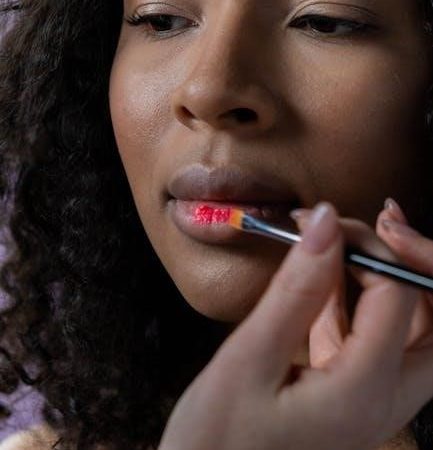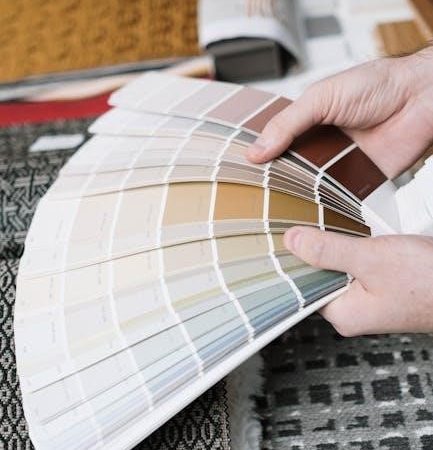glasses size guide

Understanding proper glasses size ensures comfort‚ clarity‚ and style. This guide helps measure frames accurately‚ considering lens width‚ bridge width‚ and temple length for a perfect fit.

Understanding the Importance of Proper Fit
A proper fit is crucial for both comfort and vision clarity. Ill-fitting glasses can cause slipping‚ eye strain‚ and discomfort. Frames that are too tight may leave marks‚ while loose frames can affect lens positioning‚ leading to distorted vision. Properly sized glasses ensure the lenses align correctly with your eyes‚ providing optimal vision. Additionally‚ a good fit enhances long-term wearability‚ reducing discomfort and potential headaches. Measuring frame size accurately ensures the temples rest gently behind your ears and the bridge sits comfortably on your nose. This guide helps you determine the ideal measurements for a seamless‚ comfortable fit that complements your face shape and vision needs.

Overview of Frame Measurements
Frame measurements are essential for ensuring a comfortable and proper fit. Glasses frames are typically measured in millimeters and include three key dimensions: lens width‚ bridge width‚ and temple length. These measurements are often stamped on the inside of the temple and provide a reference for sizing. Lens width refers to the horizontal size of each lens‚ while bridge width is the distance between the two lenses‚ resting on the nose. Temple length measures the arms of the glasses‚ extending from the frame to the tips behind the ears. Accurate measurements ensure the frames align with your face proportions‚ providing both comfort and clarity.
How to Measure Your Glasses Size
Use a ruler to measure lens width‚ bridge width‚ and temple length. Ensure accurate fit by referencing existing glasses or using frame size guides provided online.
Using Existing Glasses for Reference
If you already own a pair of glasses that fit well‚ you can use them as a reference to find your size. Check the measurements stamped on the inner temple of your current frames‚ typically in millimeters. These include lens width‚ bridge width‚ and temple length. Note that sizes may vary slightly between brands‚ so comparing measurements is essential; Additionally‚ consider the overall fit and comfort of your current glasses when selecting a new pair. This method saves time and ensures consistency in sizing. Always double-check the measurements to avoid discrepancies and ensure the best fit for your face shape and personal style.
Measuring Lens Width‚ Bridge Width‚ and Temple Length
Measuring lens width‚ bridge width‚ and temple length is essential for ensuring a proper fit. Lens width is the diameter of the lens‚ typically measured in millimeters. Bridge width refers to the distance between the two lenses‚ while temple length measures the arms that rest behind the ears. To measure accurately‚ use a ruler or calipers. Start by aligning the ruler with the frame’s inner edge for lens width. For bridge width‚ measure the gap between the lenses. Temple length is measured from the hinge to the end of the arm. Ensure all measurements are precise to find frames that match your size. Proper sizing ensures comfort‚ stability‚ and optimal vision clarity.

Key Frame Measurements to Consider
Measure lens width‚ bridge width‚ and temple length for a perfect fit. These dimensions ensure comfort and proper alignment with your face shape and personal style.
Lens Diameter: What It Means and How to Measure
Lens diameter refers to the width of the lens‚ measured in millimeters‚ and is crucial for ensuring proper fit and vision clarity. To measure it accurately‚ use your existing glasses as a reference or measure the distance between the temples where the lens sits. The lens diameter typically ranges from 40mm to 60mm‚ with most adults falling between 50mm to 55mm. A larger lens diameter suits wider faces‚ while smaller diameters are ideal for narrower faces. Ensure the lens aligns with your eye size for optimal vision and comfort. Proper measurement helps prevent distorted vision and ensures frames sit comfortably without slipping.
Bridge Width: Finding the Right Size for Your Nose
Bridge width refers to the distance between the two lenses of your glasses‚ resting on your nose. Proper fit ensures comfort and prevents slipping. Measure it using your existing glasses or a ruler‚ ensuring the frame sits snugly without pressure. Typical bridge widths range from 14mm to 24mm‚ with larger sizes suiting broader noses. For accurate sizing‚ align the frame with your face shape—oval or round faces may prefer narrower bridges‚ while square or heart-shaped faces often suit wider bridges. Adjusting nose pads can further customize the fit‚ ensuring stability and comfort for all-day wear.
Temple Length: Ensuring Comfort and Stability
The temple length is a critical measurement for ensuring your glasses stay securely in place; It is measured from the screw position to the end of the temple‚ including the bend‚ and typically ranges from 135mm to 150mm. Proper temple length ensures the frames sit comfortably around your ears without causing pressure or slipping. If the temples are too short‚ the glasses may feel tight‚ while overly long temples can lead to poor stability. For optimal fit‚ the temple arms should gently wrap around your ears without digging in. Adjusting temple length or using silicone temple tips can enhance comfort and prevent the frames from sliding down; This measurement is essential for long-lasting wearability and overall satisfaction with your glasses.
Determining Your Face Shape
Identify your face shape—oval‚ round‚ square‚ or heart-shaped—to select frames that complement your features. Understanding your face shape is key to choosing flattering eyewear styles.
Identifying Oval‚ Round‚ Square‚ and Heart-Shaped Faces
Understanding your face shape is crucial for selecting frames that complement your features. Oval faces are balanced‚ with forehead and jawline of similar width. Round faces have full cheeks‚ with width equal to length. Square faces feature strong jawlines and equal width and length. Heart-shaped faces are broader at the temples and narrower at the chin. Each face shape has unique characteristics that guide frame choices. For example‚ oval faces suit most styles‚ while round faces benefit from angular frames. Square faces look best with softer shapes‚ and heart-shaped faces balance with wider bottom frames. This guide helps you identify your face shape and find frames that enhance your natural appearance.
Choosing Frames That Complement Your Face Shape
Selecting frames that match your face shape ensures a flattering and comfortable fit. For oval faces‚ most frame styles work well‚ but angular frames can add definition. Round faces benefit from rectangular or geometric shapes to balance soft features. Square faces should opt for softer‚ rounder frames to reduce sharp angles. Heart-shaped faces look best with frames that are wider at the bottom‚ drawing attention downward. Consider frame proportions and your face’s natural symmetry. The right style enhances both aesthetics and comfort‚ ensuring your glasses complement your unique features while providing clear vision. Proper fit is key to both style and functionality;

Factors Influencing Glasses Size
Frame material‚ gender-specific designs‚ and temple length are key factors influencing glasses size. They affect durability‚ fit‚ and comfort‚ ensuring a personalized and stylish eyewear experience.
Material and Construction of Frames
Glasses frames come in various materials‚ each offering unique benefits. Metal frames‚ such as stainless steel or titanium‚ are durable and lightweight‚ often with adjustable nose pads for a customized fit. Plastic frames‚ including acetate and TR-90‚ provide flexibility and are ideal for those with sensitive skin. Wooden frames combine natural aesthetics with durability‚ while acetate frames are known for their vibrant colors and hypoallergenic properties. The construction of frames‚ such as hinge design and temple tips‚ also impacts comfort and stability. Material choice can affect the overall weight and fit‚ making it essential to consider personal preferences and lifestyle when selecting frames. Proper construction ensures long-lasting wear and optimal vision clarity.

Gender-Specific and Unisex Frame Sizes
Glasses frames are often categorized into gender-specific or unisex designs‚ with sizes varying to suit different facial structures. Men’s frames tend to be slightly larger‚ with wider lens widths and longer temple lengths‚ while women’s frames are generally more delicate‚ with narrower measurements. Unisex frames offer versatility‚ blending elements from both categories to fit a wide range of faces. The material and construction also influence size‚ with metal frames often being lighter and more adaptable. When choosing gender-specific or unisex frames‚ consider your face shape‚ personal style‚ and comfort preferences to ensure the best fit. Proper sizing enhances both functionality and aesthetic appeal.

How to Choose the Right Frame Size
Select frames by measuring lens width‚ bridge width‚ and temple length. Use existing glasses for reference or try frames virtually to ensure a comfortable‚ proportional fit.
Tips for Selecting Frames Based on Your Measurements
Once you have your measurements‚ choosing the right frames becomes easier. Ensure the lens width matches your face shape and eye size for optimal vision. The bridge width should fit comfortably‚ avoiding pressure on your nose. Temple length is crucial for stability—look for frames that match your temple measurement. Consider frame material and construction for durability. If shopping online‚ use virtual try-on tools to visualize the fit. Many retailers offer home try-on options to test frames before purchasing. Adjustable nose pads can enhance comfort‚ especially for unique nose shapes. By aligning your measurements with frame specifications‚ you can find glasses that are both functional and stylish.
Adjusting Frames for a Perfect Fit
Once you’ve selected your frames‚ minor adjustments can ensure optimal comfort. Gently bend the temples to fit snugly around your ears without causing pressure. For frames with adjustable nose pads‚ tweak them to sit comfortably on your nose. If the frames feel too tight‚ slight adjustments can be made to the temple tips or nose pads. For acetate frames‚ warm them slightly with a hair dryer to make them more pliable for adjustments. Always use a soft cloth to avoid scratching the frames. Properly fitted glasses should rest evenly on your face‚ with the lenses aligned to your eyes and the temples balanced for stability. This ensures clear vision and long-lasting comfort.
Proper fit is essential for clear vision and comfort. Use this guide to choose frames that suit your face shape and ensure a perfect fit always.
Final Tips for Buying Glasses Online
When purchasing glasses online‚ ensure accurate measurements by using your existing glasses as a reference. Check frame size guides and reviews for insights. Use virtual try-on tools to visualize frames on your face. Compare lens width‚ bridge width‚ and temple length with your current frames. Consider the material and construction for durability. Avoid guessing sizes—refer to the frame’s specific measurements. Read customer reviews to understand fit and comfort. Finally‚ check return policies to ensure flexibility if adjustments are needed. Proper fit ensures clear vision and long-term comfort‚ making online shopping for glasses a seamless experience.
Why Proper Fit Matters for Vision and Comfort
A proper fit is crucial for both vision clarity and long-term comfort. Ill-fitting glasses can cause eye strain‚ headaches‚ and discomfort‚ especially if the lenses don’t align with your eyes correctly. Frames that are too tight may pinch your nose and temples‚ while frames that are too loose can slip down‚ affecting stability. A well-fitting pair ensures the lenses are positioned accurately‚ providing clear vision and reducing eye fatigue. Properly fitting glasses also stay in place during activities‚ preventing frequent adjustments. Ultimately‚ a good fit enhances your overall satisfaction and confidence‚ making your glasses a comfortable and reliable companion for daily life.




